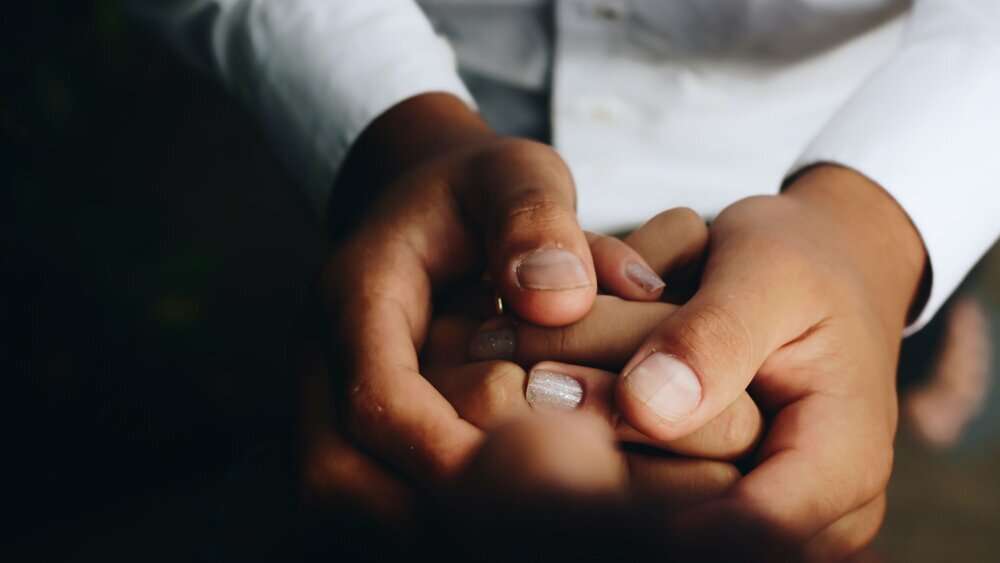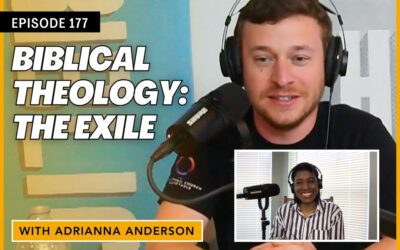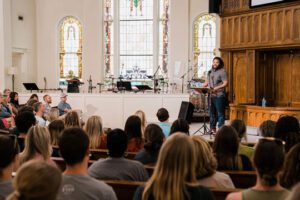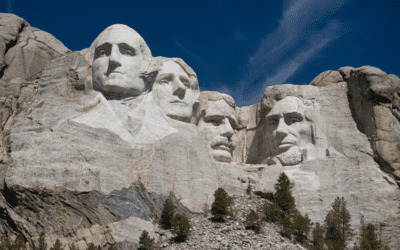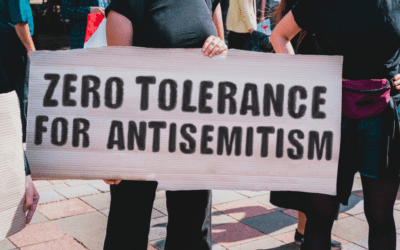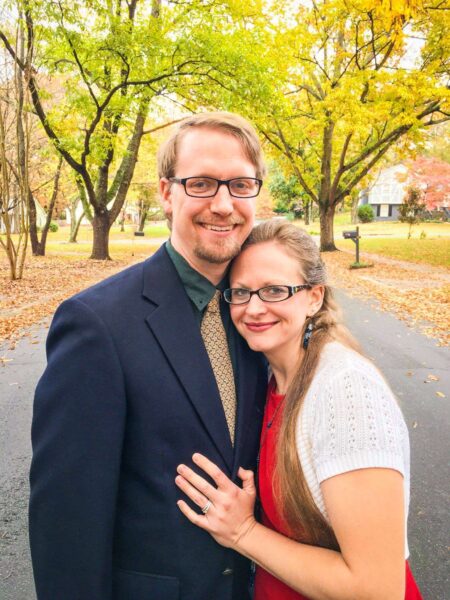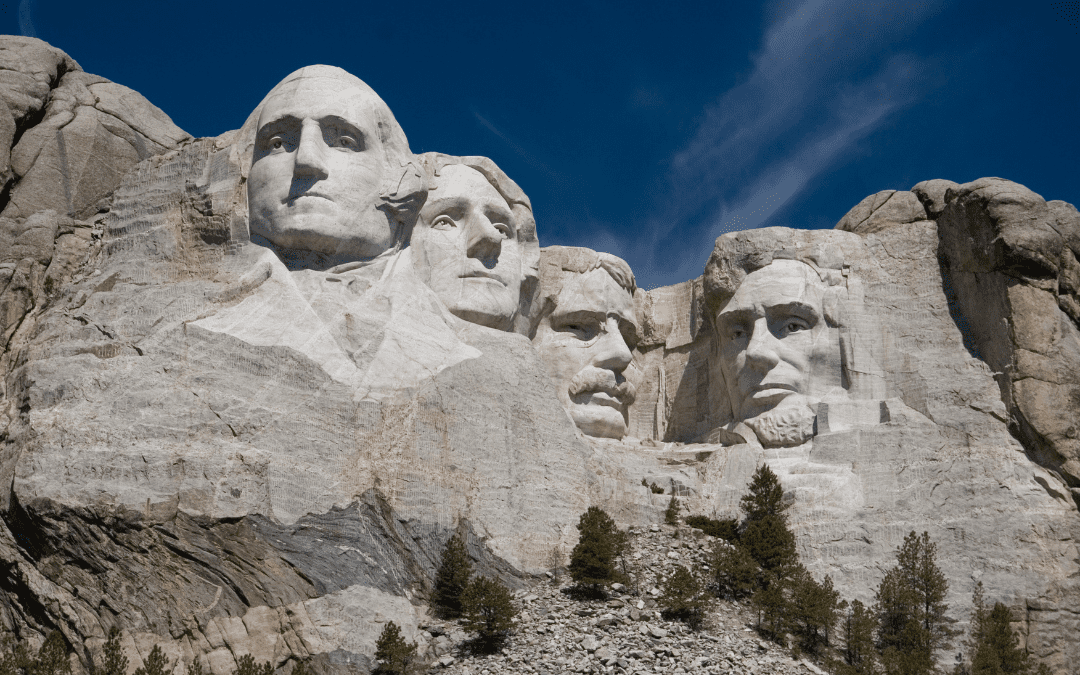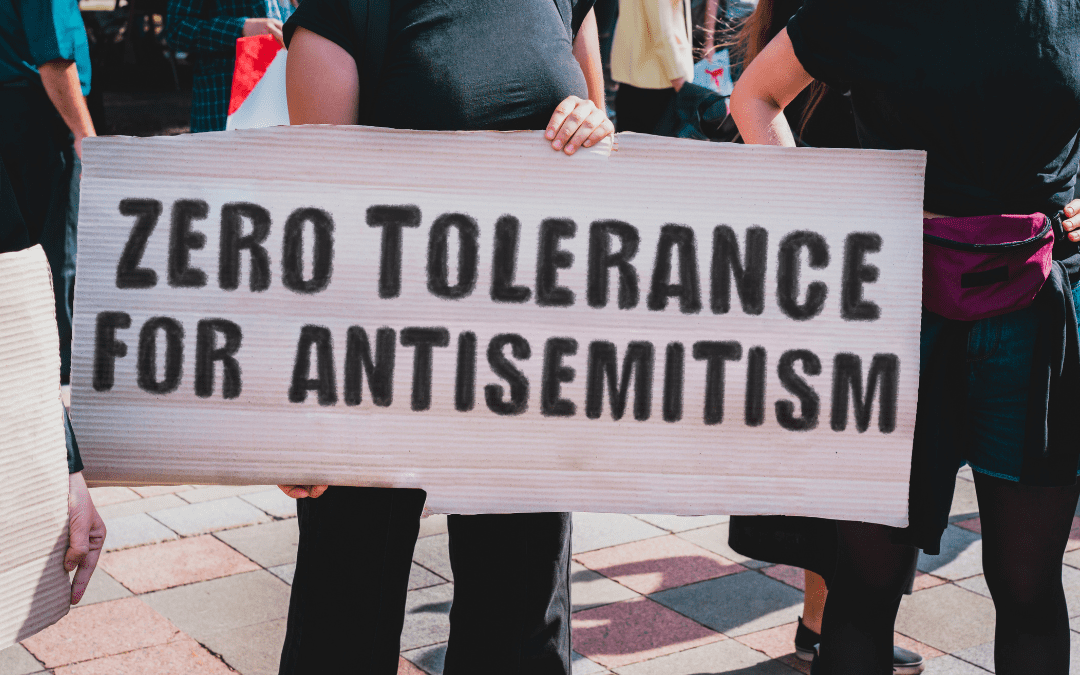The doctrine of the image of God in man, or the imago dei, is the prized jewel of contemporary Christian engagement on matters involving the human person. Christians protest abortion because it destroys an unborn human being made in God’s image. Euthanasia is likewise opposed for the same reason. Even so-called “victimless crimes” which have long fallen off most secular lists of evil like pornography and homosexuality continue to be counted by Christians as sinful and damaging to self and society because God’s images are to act like God himself, which precludes exploiting other human beings or moral deviance.
The doctrine of the imago dei is not a peripheral biblical teaching that Christians have elevated far beyond its standing. The first thing said about human beings in the Bible is that they are made in God’s image:
So God created man in his own image; he created him in the image of God; he created them male and female. (Gen 1:27 CSB)
As soon as human beings flash into existence, we are told this creation is very different from everything else God has made. God created men and women specifically to resemble himself. Reformed theologian Louis Berkhof summarizes the nobility and worth of human beings well, affirming that “[a]ccording to scripture the essence of man consists in this, that he is the image of God. As such he is distinguished from all other creatures and stands supreme as the head and crown of the entire creation.” 1 Essential to the Bible’s notion of humanity is that human life is precious and valuable because every human being is a living portrait of God himself.
INTELLECTUAL HONESTY
Despite the riches and clarity of this doctrine, a look at our history shows that something has gone terribly awry. Black men and women have been free in America for far less time than they were held as property. Even after emancipation, racial prejudice and discrimination remained officially codified in the American legal system for decades. Where was the doctrine of the imago dei all these years? No matter how strongly we believe that the imago dei serves as a bulwark to protect the church against racist beliefs and practices, history sweeps away such a notion. Make no mistake, the doctrine ought to protect us from racism. But historically, it has not.
“No matter how strongly we believe that the imago dei serves as a bulwark to protect the church against racist beliefs and practices, history sweeps away such a notion.”
This essay will survey the writings and personal practices of prominent American theologians and institutions on the imago dei and race. Doing so will show a grim reality: theologically grounding racial equality in the imago dei has been a minority position in American theology. The American Puritans of Massachusetts Bay Colony began importing black slaves to the “city on a hill” within a decade of its founding. American theologians such as Jonathan Edwards, James Pettigru Boyce, and Robert Dabney used the Scriptures to defend chattel slavery. Others such as E.Y. Mullins and J. Gresham Machen opposed social equality long after emancipation. Significant institutions and publications continued to teach and practice segregation through the Civil Rights era and into the 21 st century. Rather than lurking only in the dark, unswept corners of the American church, racial discrimination has been a mainstream viewpoint for centuries throughout our theological history.

MASSACHUSETTS BAY COLONY
The importation of slaves into the British American colonies began in Jamestown, Virginia in 1619. The American Puritans quickly followed their southern counterparts in the purchase of enslaved black people. Puritan leader John Winthrop famously declared in 1630 that the newly minted Massachusetts Bay Colony was to be “as a city on a hill” where the citizens had “entered into covenant with God” to “do justly, to love mercy, to walk humbly with our God,” being “knit[ed] together… as one man.” But by 1638, the colony had imported its first enslaved Africans and in 1641 became the first American colony to formally legalize slavery. 2 Slavery in Massachusetts was largely curtailed by an environment inhospitable to large plantations. However, by 1670 laws were adopted that made slavery generational, where children of female slaves were legally regarded as slaves themselves.
COTTON MATHER
Cotton Mather served as the eminent pastor of Second Church in Boston from 1685 to 1728. Mather’s influence as a thinking and scholar was significant, and prior to Jonathan Edwards may have been the most famous man in the Americas. 3 He was also a slaveholder, and many members of his congregation were employed in or directly benefited from the slave trade. Mather cared deeply for the salvation of his “wretched Negroes” and published The Negro Christianized in 1706. Mather urged white masters to make every aim to make their slaves brothers in the gospel and included as an appendix, “A Larger Catechism for the Negroes of a bigger Capacity.” The universality of the imago dei is clearly drawn out within this catechism, as Adam and Eve were made by God “in His own Image.” These two were to be recited by slaves as being “our first parents.” 4 Mather thus clearly understood those he owned and those his parishioners traded to be made in God’s image.
JONATHAN EDWARDS
Early 18 th century New England pastor and theologian Jonathan Edwards is often considered the finest theological mind ever produced in America. Edwards discusses the nature of the imago dei within his treatise Religious Affections . Edwards understands human beings to possess both a “moral image” of righteousness and a “natural image” consisting of “men’s reason and understanding, his natural ability, and dominion over the creatures.” 5 While the moral image was lost through Adam’s sin, all human beings still retain the natural image as sin did not erase man’s ability to reason and exercise dominion over the rest of creation.
Edwards’ belief that all human beings continue to possess God’s image did not preclude his support for slavery. He himself owned several black human beings, four of whom were named Joseph, Lee, Venus, and Titus. 6 While Edwards opposed the cruelties of the Atlantic slave trade, in one surviving draft letter, Edwards explained that he considered slavery itself to be morally neutral. Although he was troubled by the “excesses” practiced by some slave owners, he compared the possibility of sinful behavior in slave owning to that of gluttony while eating and drinking. Just as one must take care not to drink to excess, one must be careful to practice slavery in accordance with God’s law. Edwards saw white abolitionists as hypocritical for condemning slavery yet benefiting from living in a slaveholding society. 7
GEORGE WHITFIELD
Edwards’ contemporary and compatriot in the First Great Awakening began his ministry as a fierce opponent of slavery. He himself had become a slaveowner by 1747 to support his children’s orphanage in Georgia named “Bethesda.” Writing to a friend, Whitfield celebrated his purchase of slaves:
The constitution of [Georgia] is very bad, and it is impossible for the inhabitants to subsist without the use of slaves. But God has put it into the hearts of my South Carolina friends, to contribute liberally towards purchasing, in this province, a plantation and slaves, which I purpose to devote to the support of Bethesda. Blessed be God! . . . One negro has been given to me. Some more I purpose to purchase this week.8

THE ANTEBELLUM SOUTH
The early 19 th century saw a rise in concern amongst Christians regarding the presence of slavery in their midst. Christian views on chattel slavery existed on a spectrum, with some Christians leading the push for abolition. Many others were distressed by the existence of chattel slavery but refused to address it because they considered the issue to be a matter too complex to unravel or a matter of personal conscience.
The public declarations of the antebellum Presbyterian church captures many of these currents that existed throughout the early 1800s. The General Assembly of 1818 unanimously adopted a strongly worded anti-slavery statement which declared, “We consider the voluntary enslaving of one part of the human race by another, as a gross violation of the most precious and sacred rights of human nature; as utterly inconsistent with the laws of God…. [I]t is manifestly the duty of all Christians to use their honest, earnest, and unwearied endeavours to correct the errors of former times, and as speedily as possible to efface this blot upon our holy religion, and to obtain the complete abolition of slavery throughout Christendom, and if possible throughout the world.” 9 However, the same General Assembly upheld the defrocking of Rev. George Bourne for publishing a work that called for immediate emancipation. 10
Increasing fervor among abolitionists and the Nat Turner revolt in 1831 did much to dampen rising spirits for manumission. While the 1846 New School Presbyterian Assembly would declare that America’s system of slavery “is intrinsically an unrighteous and oppressive system, and is opposed to the prescriptions of the law of God, to the spirit and precepts of the gospel, and to the best interests of humanity,” it would also declare “we cannot pronounce a judgment of general or promiscuous condemnation … which should exclude from the table of the Lord all who stand in the legal relation of masters to slaves.” 11 Slavery would ultimately be a catalyst to schism within New School Presbyterians, and the Old School avoided schism only by assuring Southern churches that discipline would not be practiced for slaveholders. 12
Antebellum Baptists also divided over the question of slavery. The Southern Baptist Convention formed in 1845 as Baptists in the South broke from Northern Baptists over the question of whether the denomination would ordain a slaveholder to foreign missions.
We may say with certainty that there were impulses within the church which were progressive for their day. Many abolitionists were Christians, and Christian slaveholders within the south, such as the Presbyterian minister Samuel Davies (1723–1761), often advocated for gradual emancipation and the evangelism of their slaves. Support for gradual emancipation should not be seen as endorsement of racial equality, however. Emancipation was often connected to the return of emancipated black slaves to Africa. These recolonization efforts which were as “admitted now on all hands to be practicable” were packaged as altruism, however, repatriation efforts were often driven by white animus towards black people. The biography of black missionary Lott Cary carried an appendix which declared,
There are some who pretend to say, that the prejudice against the colored race is unjust, and that it will wear away; and that the white and colored races will live in America as one people, marrying together, and dividing power and place. These persons, when they are sincere, are idle and mischievous visionaries; who reason against the experience of ages, and against all facts of history, and against the observations of every day. They are laboring under an unfortunate error.”13
The antebellum church may certainly not be characterized as being committed to racial equality. While some Christians fervently argued for emancipation, the majority overrode such notions. Chattel slavery may have been “opposed to the precepts and spirit of the gospel,” but those who pushed for immediate emancipation were vilified and derided as radical disturbers of the peace. 14 Even the supporters of manumission generally supported repatriation rather than social equality, even though the overwhelming majority of black slaves had been born in American and never set foot in Africa.
JAMES PETTIGRU BOYCE
The sharpening pro-slavery sentiment within the southern church may be seen in the words of James Pettigru Boyce, founder of the Southern Baptist Theological Seminary. Boyce’s Abstract of Systematic Theology remained the standard theological text for Southern Baptists throughout the latter 19 th and early 20 th centuries. In it Boyce declares that the imago dei extends to every member of the human race since all human beings possess “the same essential characteristics which make a man,” including physical, mental, and moral capacities. 15
Despite seeing black people as being made in God’s image, Boyce would confidently declare to a friend “I have been, and am, an ultra pro-slavery man.” 16 Even though all human being shared the “essential characteristics” of God’s image, Boyce taught that black people were biologically inferior and therefore the equivalent of “primitive wild boar” when compared to the “domesticated swine” of whites. 17 The cataclysm of Civil War did not alter Boyce’s view on equality. After his own slaves had been liberated, Boyce argued against extending suffrage to them, repeating the typical Southern reconstructionist mantra that “this is white man’s government.” 18
ROBERT L. DABNEY
Boyce’s contemporary, the Southern Presbyterian theologian Robert Dabney, likewise held that God “created man, male and female, with reasonable and immortal souls, endued with knowledge, righteousness, and true holiness, after his own image.” 19 Dabney believed that the image separated human beings off from the “lower creatures” in God’s creation who did not possess the imago dei . 20 Even after the fall, this image remains in man’s “intelligent spiritual nature.” 21 Dabney placed humanity’s creation in the image of God as a central doctrine to all Christianity, as it provided the justification for all natural theology. 22 If man was not made in God’s image, then man would have no capacity for understanding God.
Much has been written about Dabney’s vociferous defense of slavery and racial segregation. 23 His comments regarding the ordination of black pastors within the southern Presbyterian church will suffice for this brief overview:
The universality of gospel blessings to all believers does not carry with it a universal right to church office…. [T]he setting up of black men to rule white Presbyterians, is, on every account, not for the church’s true edification…. [I]t may be added, it would be as mischievous to the souls of the blacks, as it is odious to the whites.24
Although black men were made in God’s image, able to be redeemed, and co-heirs of Christ through their participation in the gospel, it would be damaging to their souls for them to be placed into church leadership because of their own constitutions. For Dabney, black people were inferior human beings.
THE RESPONSE TO CHARLES HADDON SPURGEON
Perhaps most disturbing of all is the southern American Christian response to Charles Haddon Spurgeon’s outspoken abolitionism from his pen and pulpit in London. Back in a time where city newspapers still published the thoughts of preachers, the city newspaper of Montgomery, Alabama declared, “Last Saturday, we devoted to the flames a large number of copies of Spurgeon’s Sermons…. We trust that the works of the greasy cockney vociferator may receive the same treatment throughout the South. And if the Pharisaical author should ever show himself in these parts, we trust that a stout cord may speedily find its way around his eloquent throat.” 25 He was a “beef-eating, puffed-up, vain, over-righteous pharisaical, English blab mouth” 26 who paraded around with “(soiled) sleek hair, prominent teeth, and a self-satisfied air.” 27 Virginia minister and first secretary of the Southern Baptist Convention’s Foreign Missions Board James B. Taylor concurred, “Wonder that the earth does not open her mouth, and swallow up Spurgeon…. Pity that that cord from the South is not applied to his eloquent throat!” 28 Most grievous of all, he was a “hell-deserving Englishmen.” 29
These excerpts are horrifying for the simple fact that pastors in the American south viewed slavery as more central to Christian fellowship than the gospel of Jesus Christ. Charles Spurgeon would have signed the same doctrinal statements as his southern American Baptist counterparts—including belief that all human beings were God’s image—and yet Spurgeon’s abolitionist views marked him out as a proper target for lynching and eternal damnation before God Most High.
“We must not think that the outcome of the American Civil War instantly changed the church’s viewpoint of black people.”
AFTER RECONSTRUCTION
We must not think that the outcome of the American Civil War instantly changed the church’s viewpoint of black people. Opposition to black equality continued throughout post-Civil War America, implicating some of America’s finest theologians. 30 Southern Baptist leader E. Y. Mullins would write in 1907, “It is immoral and wrong to demand that negro civilization should be placed on par with white.” 31 J. Gresham Machen opposed B. B. Warfield’s integration of the dormitories at Princeton Theological Seminary in 1913. 32 The Southern Baptist Theological Seminary would not admit black students into its traditional classes until 1950, meaning that more time passed between the abolition of slavery and its integration than integration until today. 33 The Presbyterian Guardian ran a series of articles by black and white Presbyterian ministers calling for an end to segregation in 1964, 34 which was met with an outpouring of protest and the charge in a response article that the goal of the Civil Rights Movement “seems to be the same as that of the Marxist philosophy.” 35 Readers felt “a relief” when the next edition offered a defense of segregation. 36 The Criswell Study Bible endorsed the overtly racist “Curse of Ham” argument as late as 1979. 37 Bob Jones University continued to prohibit interracial dating until 2000. 38 All have affirmed the doctrine of the imago dei alongside their continued discrimination against and marginalization of their black brothers and sisters.

Our historical survey is not a revisionist history, with a series of racist statements and actions collated and magnified in their significance. The public statements of the largest conservative Baptist and Presbyterian denominations support the mainstream nature of racist theology and practice in American church history. The Southern Baptist Convention adopted a resolution in 1995 which declared,
Our relationship to African-Americans has been hindered from the beginning by the role that slavery played in the formation of the Southern Baptist Convention…. Many of our Southern Baptist forbears defended the right to own slaves, and either participated in, supported, or acquiesced in the particularly inhumane nature of American slavery…. In later years Southern Baptists failed, in many cases, to support, and in some cases opposed, legitimate initiatives to secure the civil rights of African-Americans.39
In 2016, the Presbyterian Church in America repented of their racist attitudes and practices during the Civil Rights era when it declared,
[T]he 44th General Assembly of the Presbyterian Church in America does recognize, confess, condemn and repent of corporate and historical sins, including those committed during the Civil Rights era, and continuing racial sins of ourselves and our fathers such as the segregation of worshipers by race; the exclusion of persons from Church membership on the basis of race; the exclusion of churches, or elders, from membership in the Presbyteries on the basis of race; the teaching that the Bible sanctions racial segregation and discourages inter-racial marriage; the participation in and defense of white supremacist organizations; and the failure to live out the gospel imperative that “love does no wrong to a neighbor” (Romans 13:10) . . . .40
As much as we might wish to say that emancipation drew racist attitudes and practices to a close within the American church, the true facts of history demonstrate that this is not the case.
WHY HISTORIOGRAPHY MATTERS
The thesis of this article is not that every theologian in American history is awash in racial prejudice. Christians have stood against slavery and racial inequality in every era of American history. But history does demonstrate the thesis of this paper, that the imago dei has not proven to be a bulwark against ideological and enacted racism. The American church before the Civil War was confined by “[t]he refusal of the majority of the nation’s ‘orthodox’ churchmen to join the abolitionists in denouncing slavery.”41 After the Civil War, conservative denominations continued in their discriminatory beliefs and practices.
Any serious accounting of American theological history will recognize that the white American church collectively was not a leading-light hero in the charge against racial discrimination. Instead, the white church often proved to be an institution that simultaneously taught that all men were made in God’s image and that this doctrine did not promote the equality of black and white people.

WHY BRING THIS UP?
Christians are not immune from the natural human tendency to overlook or file off the rough edges of our past evils. An intellectually honest look at American Christianity’s past shows that the doctrine of the imago dei is not the bulwark we wish it was. Any feeling of confidence that we simply cannot be racist because we believe that all people are made in God’s image is terribly misplaced as evidenced by generation after generation who have come before us.That these men were men of their time is true. George Whitfield, Cotton Mather, Samuel Davies, and others were benevolent in their treatment of enslaved black people in comparison to others of their day. However, comparative beneficence does not equal biblical faithfulness.
The charge may be made that I am simply throwing stones at theologians who were “men of their times” and could not reasonably be expected to exceed their times. Indeed, I am quick to acknowledge that my generation is full of wrong thinking and wrong practice (and me in particular). But there are certain stones that ought to be thrown. The Bible smooths out the failures of none of its characters. To charge David for his abuse of power is not to unfairly besmirch him. To highlight the hypocrisy of Peter retreating under social pressure from eating with the Gentiles is faithful to history and the biblical text. There are to be sure significant errors committed by people of our generation. We should be better than we are. And future generations are right to acknowledge and highlight our errors and evils that they may not make them in turn. When we keep the good and ignore the bad, we open ourselves up to incorporating the errors and blindness’s of the past.
In conclusion, I would simply ask you, my reader, how much of the history and statements in this essay is familiar to you? If the answer is “none of it” or “very little,” then I would suggest this highlights a significant problem. Most white American Christians are quite ignorant of how entrenched racial discrimination has been within the church. While picking and choosing individuals from the past may act as a salve on our battered historical consciences, it does not tell the full story. Yes, there were Christians who consistently and fruitfully advocated for the equality of all human beings. But to present them as the majority is to commit significant historical revisionism.
The Bible draws stronger connections between our past and the present than we may wish. It’s easy for us to look to the past and say, “Those are errors from the past. Don’t fault me for the sins of my forbearers.” Such a quick dodge avoids the character of men like Daniel who surveyed the sins of his people and declared,
Ah, Lord—the great and awe-inspiring God who keeps his gracious covenant with those who love him and keep his commands—we have sinned, done wrong, acted wickedly, rebelled, and turned away from your commands and ordinances. Lord, righteousness belongs to you, but this day public shame belongs to us: the men of Judah, the residents of Jerusalem, and all Israel—those who are near and those who are far, in all the countries where you have banished them because of the disloyalty they have shown toward you. Lord, public shame belongs to us, our kings, our leaders, and our ancestors, because we have sinned against you. (Daniel 9:4–5, 7–8 CSB)
Daniel was not personally guilty, but his people were. And he was ashamed. The concept of corporate guilt is a widely debated topic within contemporary conversations about racial reconciliation. But we must draw our attention to the biblical text. Daniel does not discuss corporate guilt, as though he himself bore moral stain for the sins of his forbearers. He chooses something else to ascribe to himself—shame. He feels embarrassment for the errors of who have come before him, recognizing that they are like him more than they are not.
Daniel he understood that “public shame belongs to us” (Daniel 9:8). He did not exclude himself, though he himself was faithful to the covenant. For better or for worse, our ancestors are our history. Grief extends beyond simply acknowledging their theological errors. Our people—the church, the men we still read as experts in the things of God—plundered and exploited the bodies and lives of those made in God’s image. They mocked them as inferior, persecuted those who dared to disagree, and continued such practices long after the “equal protection” became the law of the land.
With Daniel we must say, “Public shame belongs to us.”
This is not a small error, a minor theological sideshow. Our institutions supported racist laws and the continuation of segregation.42 Our institutions attempted to prevent black ordination.43 Our institutions flew flags half-mast when forced by the courts to integrate.44 There’s no escaping it—that is our heritage. And in the grand sweep of American theology, we are the innovators who say the imago dei means that black and white people are equal in worth, dignity, and intelligence and that to say otherwise is to commit error serious enough for disfellowship. It’s not “white guilt” or “wokeness” to say so—it’s an honest reading of the plainly attested literature of the past. And we must resist the temptation to say, “But it’s the other traditions!” Every major tradition—Baptist, Presbyterian, Methodist, Anglican—has admitted within its members those who believe the gospel and yet also believe that the imago dei does not preclude the exploitation and disparagement of black people.
Atheism or some other religion does not provide a stronger ideological basis for affirming the equality of all people than does biblical Christianity. To demonstrate so is another article. But we must first come to terms with the horrors of our past. The historic American theological textbooks we turn to for guidance were written from the perspective that white Americans have the right to own or oppress black human beings. That isn’t a small error. It’s not a tiny defect in an otherwise pristine theological work. It’s a horrifying, grievous, nauseating error. Our early American theological heroes would have looked at my black neighbor and his wife and believed them to be rightful property. Our later American theological heroes would have advanced them beyond the status of property, but would still have considered them inferior and unworthy of acceptance and full participation in society because of the color of their skin. With Daniel we must say, “Public shame belongs to us.”
1 Louis Berkhof, Systematic Theology in Systematic Theology: New Edition Containing the Full Text of Systematic Theology and the Original Introductory Volume to Systematic Theology (Grand Rapids, MI: Eerdmans, 1996), 205.
2 Mass Moments, “February 26, 1638: First Slaves Arrive in Massachusetts,” accessed March 1, 2021, available at https://www.massmoments.org/moment-details/first-slaves-arrive-in-massachusetts.html.
3 For a short summary of Mather’s life, see Carol Sue Humphrey, review of The First American Evangelical: A Short Life of Cotton Mather by Rick Kennedy, Christian Scholar’s Review 46:3 (Spring 2017), available at https://christianscholars.com/the-first-american-evangelical-a-short-life-of-cotton-mather/.
4 Cotton Mather, The Negro Christianized. An Essay to Excite and Assist that Good Work, the Instruction of Negro-Servants in Christianity (Boston: Green, 1706), 25, available at https://digitalcommons.unl.edu/cgi/viewcontent.cgi?article=1028&context=etas.
5 Jonathan Edwards, A Treatise on Religious Affections in The Works of Jonathan Edwards, vol. 1 (Peabody: Hendrickson, 2007), 234-343.
6 Kenneth P. Minkema, “Jonathan Edwards on Slavery and the Slave Trade,” The William and Mary Quarterly 54, no. 4 (1997): 823–34, 825.
7 Ibid, 831. Edwards writes in his draft letter, “[F]or if they still continue to cry out against those who Keep negro slaves as partakers of injustice in making them slaves & Continue still themselves now withstanding to be partakers of their slavery Let em own that their objections are the Conscientious but merely to make difficulty & trouble for their Neighbors….”
8 Stephen J. Stein, “George Whitefield on Slavery: Some New Evidence,” Church History 42, no. 2 (1973): 243–56.
9 William E. Moore, ed., The Presbyterian Digest: A Compend of the Acts and Deliverances of the General Assembly of the Presbyterian Church in the United States of America (Philadelphia: Presbyterian Board of Publication, 1873), 482, available at https://www.google.com/books/edition/The_Presbyterian_Digest/jhJKAAAAMAAJ. Donald Fortson has told the Presbyterian side of this story, and I am indebted to his work here. Donald Fortson, “The Slavery Question: Debate and Schism,” in Reformed and Evangelical Across Four Centuries: The Presbyterian Story in America (forthcoming).
10 Moore, Presbyterian Digest, 567; Fortson, “The Slavery Question.”
11 Erskine Mason and E. F. Hatfield, eds., Minutes of the General Assembly of the Presbyterian Church in America [New School] from A.D. 1838 to A.D. 1858, Inclusive (New York: Stated Clerks of the General Assembly), 162, available at https://archive.org/details/minutesofgen1858pres.
12 Fortson, “The Slavery Question.”
13 J. H. B. Latrobe, “Appendix on the subject of Colonization” in J. B. Taylor, Biography of Elder Lott Cary, Late Missionary to Africa (Baltimore: Armstrong & Berry, 1837), 99–108.
14 Mason and Hatfield, Minutes, 162.
15 James P. Boyce, Abstract of Systematic Theology (Christian Gospel Foundation, 1887), 192.
16 Personal Letter from James P. Boyce to H. A. Tupper, Dec. 1860, quoted in Curtis Woods, et al., “Report on Slavery and Racism in the History of the Southern Baptist Theological Seminary,” The Southern Baptist Theoligical Seminary, December 12, 2018, 20, available at https://sbts-wordpress-uploads.s3.amazonaws.com/sbts/uploads/2018/12/Racism-and-the-Legacy-of-Slavery-Report-v4.pdf.
17 Boyce, Abstract,193. Here Boyce is referencing Blumenbach’s pseudo-scientific cranial measurements to establish the biological inferiority of black people.
18 Sidney Andrews, The South since the War: As Shown by Fourteen Weeks of Travel and Observation in Georgia and the Carolinas (Boston: Ticknor and Fields, 1866), 72, quoted in Woods, “Report,” 27. Boyce would eventually urge his state legislature to ratify the 14th Amendment, although this appears to be acquiescence in the face of inevitability and an effort to maintain social order. See ibid, 28.
19 Westminster Confession of Faith, 4.2
20 Robert L. Dabney, Systematic Theology (Carlisle: Banner of Truth, 1871, repr. 1996), 292–94.
21 Ibid, 294.
22 Ibid, 294–95.
23 See Sean Lucas, Robert Lewis Dabney: A Southern Presbyterian Life (Phillipsburg: P&R, 2005); David Kleven, “Providence Is No Excuse: Exposing a Reformed White Supremacist,” Desiring God, January 15, 2018, https://www.desiringgod.org/articles/providence-is-no-excuse.
24 Robert L. Dabney, “Eccelesiasitcal Relation of Negroes” (Richmond: Boys and Girl’s Monthly, 1868), 15, available at https://biblioskolex.files.wordpress.com/2018/09/dabney-ecclesiastical_relation_of_negroes.pdf.
25 “Mr. Spurgeon’s Sermons Burned by American Slaveowners,” quoted in Christian George, The Lost Sermons of C. H. Spurgeon, vol. 1 (Nashville, B&H Academic, 2017), xviii.
26 “A Southern Opinion of the Rev. Mr. Spurgeon,” The New York Herald, March 1, 1860, quoted in “The Reason Why America Burned Spurgeon’s Sermons and Sought to Kill Him,” Spurgeon Center, September 22, 2016, https://www.spurgeon.org/resource-library/blog-entries/the-reason-why-america-burned-spurgeons-sermons-and-sought-to-kill-him/.
27 “Spurgeon and the Lady,” Charleston Courier, June 15, 1858, quoted in “Reason,” Spurgeon Center.
28 “James Barnett Taylor,” Southern Baptist Historical Library & Archives, accessed March 1, 2021, http://www.sbhla.org/bio_taylor.htm.
29 “Spurgeon on Slavery,” The Bossier Banner, February 24, 1860, quoted in “Reason,” Spurgeon Center.
30 Dabney’s already-referenced position on the ordination of black men to the ministry and Boyce’s insistence that government was for white men were views they held during reconstruction. These will not be repeated here for the sake of not becoming redundant.
31 Edgar Y. Mullins to O. H. VanNorden, Jan. 12, 1907, quoted in Woods, “Report,” 56.
32 Bradley J. Gundlach, “‘Wicked Caste’: B. B. Warfield, Biblical Authority, and Jim Crow, The Journal of Presbyterian History 85, no. 1 (2007): 28–47, 42. See also Historical Audit Committee, “Princeton Seminary and Slavery,” Princeton Theological Seminary, 2018, available at https://slavery.ptsem.edu/the-report/moving-forward/.
33 Woods, “Report,” 61.
34 See various articles in The Presbyterian Guardian 33:6 (July–August 1964), available at https://opc.org/cfh/guardian/Volume_33/1964-07_08.pdf.
35 Morton H. Smith, “The Racial Problem Facing America,” The Presbyterian Guardian 33:10 (October 1964), 125–28, 127, available at https://opc.org/cfh/guardian/Volume_33/1964-10.pdf.
36 Thomas G. Kay, letter to the editor, The Presbyterian Guardian 33:12 (December 1964), 162–63, available at https://opc.org/cfh/guardian/Volume_33/1964-12.pdf.
For a helpful discussion of this entire controversy, see Bradley Mason, “Then & Now: The Conservative Presbyterian Race Debate in 1964,” Also A Carpenter,November 26, 2018, https://alsoacarpenter.com/2018/11/26/then-now-the-conservative-presbyterian-race-debate-in-1964/.
37 For a helpful discussion of Criswell’s inconsistent movement toward racial equality see Curtis W. Freeman, “‘Never Had I Been So Blind’: W.A. Criswell’s ‘Change’ on Racial Segregation” The Journal of Southern Religion 10 (2007): 1–12.
38 “Bob Jones University Drops Interracial Dating Ban,” Christianity Today, March 1, 2000, available at https://www.christianitytoday.com/ct/2000/marchweb-only/53.0.html. In 1998, a spokesman for BJU declared, “God has made people different from one another and intends those differences to remain. Bob Jones University is opposed to intermarriage of the races because it breaks down the barriers God has established.” “Bob Jones University Apologizes for its Racist Past,” Journal of Blacks in Higher Education, available at https://www.jbhe.com/news_views/62_bobjones.html.
39 “Resolution On Racial Reconciliation On The 150th Anniversary Of The Southern Baptist Convention,” available at https://www.sbc.net/resource-library/resolutions/resolution-on-racial-reconciliation-on-the-150th-anniversary-of-the-southern-baptist-convention/. With debate, the resolution was adopted on June 1, 1995. Annual of the Southern Baptist Convention, 1995 (Atlanta: Recording Secretary of the Convention; Nashville: Executive Committee, Southern Baptist Convention, 1995), 79–80, available at http://media2.sbhla.org.s3.amazonaws.com/annuals/SBC_Annual_1995.pdf.
40 Minutes of the Forty-Fourth General Assembly of the Presbyterian Church in America (Lawrenceville, GA: Office of the Stated Clerk, 2016), 70–78, 77, available at https://pcahistory.org/pca/ga/44th_pcaga_2016.pdf.
41 William Lloyd Van Deburg, “Rejected of Men: The Changing Religious Views of William Lloyd Garrison and Frederick Douglass,” Ph.D. diss., Michigan State University, 1973, 2, available at https://d.lib.msu.edu/etd/8274.
42 As already mentioned, this included Southern Baptist Theological Seminary (Boyce and Mullins) and Princeton Theological Seminary (Machen).
43 Dabney in the Southern Presbyterian Church is one example previously surveyed.
44 See “Bob Jones University Apologizes for its Racist Past,” Journal of Blacks in Higher Education, available at https://www.jbhe.com/news_views/62_bobjones.html.

